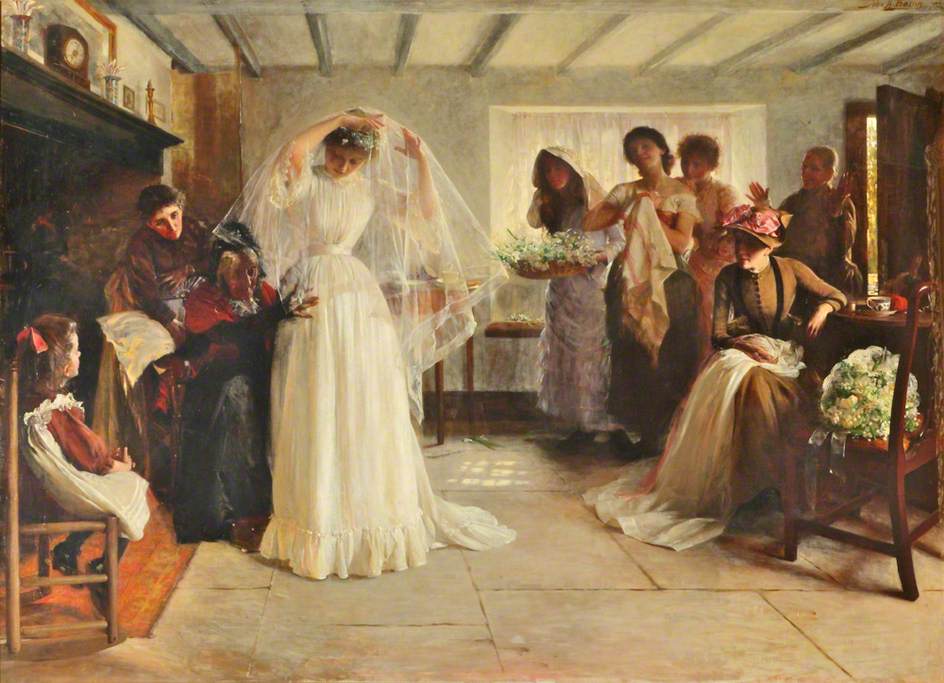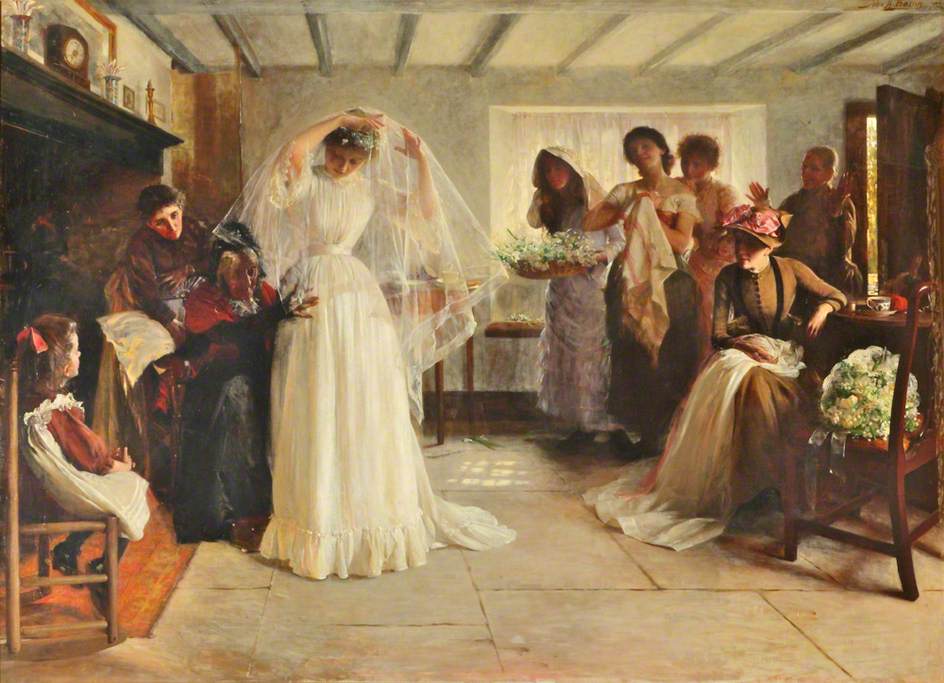If we were Modern Bride magazine, we’d probably call these “wedding traditions” rather than superstitions. But think about it—most of them were started by people who believed in evil spirits and witches and talismans.
Bridal Veil
The veil has served a number of purposes throughout history, including: 1) protecting the bride from the “evil eye;” 2) protecting her from jealous spinsters (who might also be witches); and 3) protecting the groom, his family, and other wedding guests from the bride’s psychic powers—just in case she has any.
Wedding Kiss
A toned-down but direct throwback to the days when the couple was required to consummate their marriage in the presence of several witnesses, to insure that the consummation actually took place.
Bride’s Garter and Bouquet of Flowers
Originally the groomsmen fought with each other to see who would get the bride’s garter, which was supposed to bring good luck to the person who possessed it. But the Catholic Church frowned on the rowdy practice, and it was eventually replaced by a milder custom: the bride throwing a bouquet of flowers to her bridesmaids. Today the customs exist side by side.
Wedding Rings
One of the oldest wedding practices. Ancient Egyptians, Romans, and Greeks all exchanged rings during their wedding ceremonies. Because a circle is a round, unending shape, it came to symbolize the ideal love that was supposed to come from marriage: it flowed from one person to the other and back again, forever. The ring has always been worn on the left hand—and was originally worn on the thumb. It was later moved to the index finger and then to the middle finger, and eventually ended up on the third, or “medical,” finger. Reason: The third finger was believed to lead straight to the heart, via a single nerve.
Honeymoon
This European tradition dates back hundreds of years and gets its name from the fact that newlyweds were expected to drink honey (believed to be an aphrodisiac) during the period of one full cycle of the moon (about a month).
Throwing Rice or Confetti
Originally a fertility ritual. Wedding guests threw wheat at the bride only, in the hope that she would bear children the same way that wheat produced bread.
Wedding Cake
Guests originally gave “bride-cakes” to a just-married woman to encourage fertility.
June Wedding
It was customary for Romans to marry in June to honor the queen of the gods, Juno—who was also the goddess of women. They hoped to win her favor to make the marriage last, and make childbirth easier.
Carrying the Bride Over the Threshold
Romans thought good and evil spirits hung around the entrance of a home. They also believed that if you walked into your house left foot first, the evil spirits won. So to be sure the bride—whom Romans figured was “in a highly emotional state and very apt to be careless”—didn’t accidentally step into her new home with the wrong foot, the groom just picked her up and carried her.
Reception Speech
In pre-Christian Rome, newlyweds hired an “official joker” to tell dirty stories to guests during the reception. The Romans believed that “unclean” thoughts in the minds of guests turned the attention of vengeful gods away from the newlyweds, which helped protect them from evil.
Decorating the Wedding Car
In medieval France, when a couple was unpopular, people derided them publicly by banging on pots, kettles, etc. This was a charivari, or “rough serenade.” In America it became a shivaree, and people got the treatment from friends. This gave way to a new custom—trying to keep a couple from consummating their marriage by making noise at their window. When newlyweds began leaving weddings by car, the only way to harass them was to deface the vehicle.










